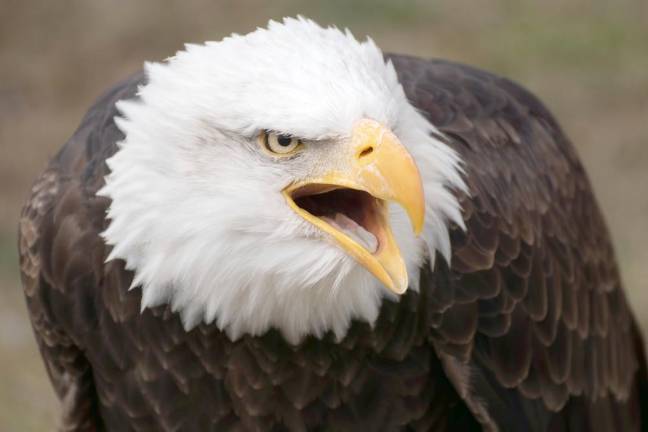Report on the March 8 Search for Eagles
Bushkill. Jack Padalino, president emeritus of Pocono Environmental Education Center and Brandwein Institute, led the March 8 search for 36 species of birds, including 8 bald eagles and 16 red-tailed hawks. The highlight was the eastern phoebe in the Lauren Ridge Cemetery.

The season’s last Dr. S. Marie Kuhnen Memorial Field Trip, Search for Eagles, took place in the Delaware Valley on Sunday, March 8, from 8:00 a.m. to 3:30 p.m.
At the start it was 21 degrees and a cold, bright sunny day with winds from the northwest. The day bald eaglegan with watching feeder birds at home and at the Pocono Environmental Education Center (PEEC) that included dark-eyed junco, tufted titmouse, black-capped chickadee, downy, red-bellied, and pileated woodpeckers. Four of us logged 149 miles in the Delaware Water Gap National Recreation Area and Upper Delaware Scenic River. We started at the Buskill Access and the search concluded at the headwaters of the Lackawaxen River at 3:30 p.m. at 57 degrees.
The highlight was the eastern phoebe in the Lauren Ridge Cemetery. The first bald eagle flew above the shale bank near Tom’s Creek. A second bald eagle was in the nest near Route 209 mile marker 16. Vald eagle number 3 flew above us from New Jersey side of the river south of the Milford bridge. Bald eagle number 4 was sighted from the south end of the cemetery and perched on the New Jersey side of the river.
Next, an adult bald eagle was incubating in the nest opposite Indian Head Canoe launch. No bald eagles were seen at Mongaup, Plank Road, or Rio.
At Pond Eddy we watched a bald eagle soar above us and got a great look at a perched bald eagle across the river. Another soared above us as we traveled along the Delaware.
From the Zane Gray observation site near the confluence of the Delaware and Lackawaxen Rivers we were able to locate our last bald eagle soaring in the distance upriver along the Delaware. We did not find bald eagles along the Lackawaxen.
Eagle observation data that we collect are shared with members of the Sussex County Bird Club, Eagle Institute, and Hawk Migration Association of North America HMANA.An eagle identification field guide and “Search for Eagles” instructional material will bald eagle are provided for participants by the Paul F-Brandwein Institute.
Join us next winter to Search For Eagles, the symbol of our nation.